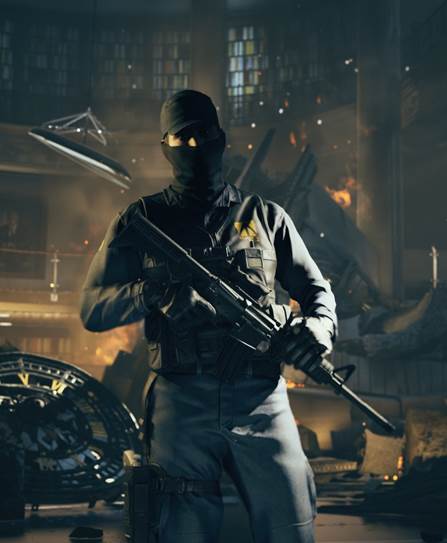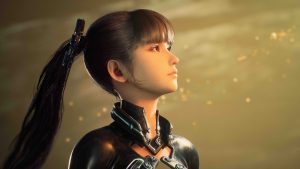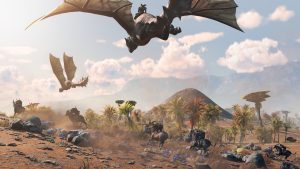
Quantum Break is an ambitious title from the folks at Remedy Entertainment. It’s also in many ways a true union of video games and live action movies, something that the developers and Microsoft have implemented quite well in the game. Right from the day it was first shown off almost 3 years ago, it was touted as a title that will set new benchmark for visuals on the Xbox One in the same way Uncharted 4: A Thief’s End is expected to do for the PS4 next month.
So does Quantum Break deliver breathtaking image quality with optimal performance? Well, the answer is a bit complicated but before jump there we wanted to talk briefly about the NorthLight engine. NorthLight is Remedy’s in-house engine which supports a full physically based deferred renderer which essentially means the game’s framework uses a modern combination of rendering and lighting tools along with a multi-scale global illumination methodology. Global Illumination was one of the biggest challenges that Remedy faced while developing Quantum Break. They tried with several solutions such as Voxel Cone Tracing and Light Propagation Volumes, all of which were too resource intensive given the quality Remedy were aiming for. In the end, the developers settled for Irradiance Volumes. This methodology approximates illumination where traditional global illumination algorithms may prove to be too expensive. Long story short, Irradiance Volumes is proven to have good performance. This is especially important in Quantum Break given how dynamic the levels are during gameplay. Furthermore, this method works consistently well for dynamic objects and volumetric lighting, something the game employs liberally.
The engine also employs screen space ambient occlusion along with complex using of screen space lighting, screen space occlusion, screen space reflection, and reflection probes. All of these come together to create a realistic dynamic lighting solution which puts the tech right up there with the likes of The Order: 1886 and Assassin’s Creed: Unity.
Moving on to other facets of the tech employed, the game utilizes a cinematic grain filter along with depth of field and intense blur. The character modeling is simply outstanding in the game. The game employs advanced sub surface scattering along with fantastic and realistic muscle animations, especially during cutscenes. Ambient occlusion has been implemented but as revealed by Remedy during Siggraph 2015, they are rendered at 720p. Fortunately, they seem to be free from any artefacts.
However the heart of the game’s visual prowess is its use of physics, destruction and post processing effects. The NorthLight engine is able to render destruction at reasonable levels with the ability to destroy covers and several objects in the game. It’s definitely not up to the par of say, the FrostBite engine but what is there is remarkably impressive given the complex physics simulation and the continuous time shifting that some of the levels introduce. Time manipulation is the main theme in Quantum Break so one can expect a ton of post processing effects on display when time comes to a standstill. And bullet trails…they look dazzling!
In order to achieve such an intense on screen simulation, Remedy had to make a number of compromises and employ complex techniques to achieve the desired result. Right off the bat you can see pop in issues when you are in an area which has vegetation. Shadow quality isn’t all that great either and dithering can be experienced from time to time. Texture quality looks great up front but some of the details are lost when seen from a distance due to a lower quality anisotropic filtering solution. Furthermore the quality of reflections is mediocre at best. The inclusion of 4xMSAA is a great addition and to an extent it removes all jaggies although at times we can see some of them hovering around Jack’s hair.
Level of detail is also an issue in some places with some objects resolving to their expected state with a short amount of delay. Performance is solid for the most part. The game targets 30 frames per second cap and for the most part, the experience was smooth. But there were times during cutscenes where frame drops can be noticed.
This brings us to the interesting tidbit…the image quality and the resolution this game is rendering at. Unlike other games, the way NorthLight engine renders the game is quite different. In order to explain this in detail, let us take the case of Killzone Shadowfall which uses a method called as temporal reprojection to achieve a 1920 X 1080 resolution. The way this methodology works is that instead of discarding previous frame information, the game’s engine uses the current, past and the past-past frame to reconstruct the image at a full 1920 X 1080p render image. So essentially three images of history pixels of 960 X 1080 are used with a pixel movement algorithm to correctly predict where they will be in the future with a 1080p image used as reference. Obviously this is easier said than done but for the most part it works and the process is only bound to get better in the future.
On the other hand we have Quantum Break which uses temporal reconstruction from four previous 720p 4x MSAA frames. Remedy claims that such a method gets them complex shading and effects, resulting into a cinematic look. This particular solution does not really make it an easy job on getting a fix what the actual resolution is. Several components of the game such as ambient occlusion are clearly running at 720p but there is a good chance that other sections of a particular image may be running at a higher resolution. We analyzed a few initial scenes and it’s clear that at least in those scenes the game is running at a 720p to 900p resolution possibly indicating a dynamic buffer in place. But do note that this may not hold true for every scene out there.
This also means that a combination of 4xMSAA and temporal reconstruction results into a softer image quality during motion and a far better image quality when there is not a lot of motion. For some odd reason, this does not translate into the in-game cutscenes as there is a noticeable bump in image quality. Furthermore, we observed a lot of shimmering and ghosting effects. We are not quite sure about the reason behind this. May be it’s because of the temporal reconstruction methodology where the algorithm is struggling to stabilize the information it has received from past pixels. However it must be noted that this mostly happens during motion.
It’s not easy to ignore these issues and it can be distracting when you are following NPCs or when there is not a lot of shooting going on. However once the action begins, the on screen visuals are a sight to behold. Especially the time rush and time dodge powers help the action feel as if it is running at a higher frame rate. It’s within these action sequences the player can forget the annoying shimmering effects and get sucked into the breathtaking visual effects on offer.
So where do we stand regarding Quantum Break on Xbox One? Is it a technical showcase for the console? It comes very close to achieving that but it falls short due to a number of compromises that Remedy made to gain on screen effects. The shimmering and ghosting effects along with the occasional tearing and frame drops are distracting but in no way they are a deal breaker. In some facets such as animation technology and post processing effects, yes, it manages to set new benchmarks. But in terms of image quality and general sharpness that comes along with a higher resolution buffer, Quantum Break falls short. However despite its complex resolution methodology and the compromises in other graphical facets it manages to shine through as one of the best looking games available right now on the Xbox One.
















Share Your Thoughts Below (Always follow our comments policy!)